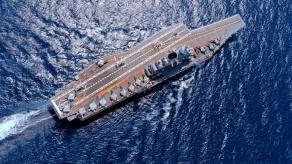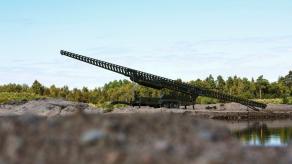When Ukrainian tank crews were trained on Leopard 2 tanks in Germany, Bundeswehr instructors received an important question: how do you get through a minefield?
And the answer of the German tutors was: simply drive the tank around it. This episode, illustrating the level of comprehension of modern warfare by NATO, was shared with Welt by one of the Ukrainian tankers now operating a Leopard 2A6 main battle tank on the battlegrounds of Ukraine.
Read more: russians Deploy Soviet UMZ Minelaying Systems, the New Vehicle's Already Been Destroyed by Ukrainians
Such a "band-aid on a bullet wound" kind of solution was suggested because Bundeswehr imagines a minefield as a 100x200 meters area that can indeed be overcome by taking a detour. Apparently, at that time the German instructors had no idea how russians plant mines over acres of territory and actively deploy remote minelaying systems, as they taught Ukrainian tank crews in the spring of 2023.
Moreover, those were top-notch instructors who had mastered Bundeswehr doctrines which raises suspicions that many other tankers of NATO countries were taught the same way.
Here's one more reason to think so. The publicly available manual on mine threat issued by the U.S. Army in 2004 depicts a minefield as a rectangle area of 100 per 200 meters, detailing that mines are planted at a distance of 50 cm from each other, the standard is 0.005 mines per one square meter – adding though that this is the parameter minimum for both field size and mine density.

Also, this manual shows how a MICLIC mine-clearing vehicle is applied to breach contaminated territories. No wonder at this point that the minefields in this example have dimensions less than 100 meters and 150 meters deep.
In the first case, it would be enough to have one MICLIC make a passage. In the second, it's also relatively simple but takes two mine clearance vehicles at once. One MICLIC makes a corridor with its own explosive anti-mine charge, then the other one enters the breach and continues to make it through, as in the picture below.

We should also take note of the minefield creation standard in the American military which defines the standard dimensions of the minefield in front width and depth.

At the same time, what it means in practice is that during peacetime training, US sappers learn how to make minefields of these exact sizes, then learn how to overcome the same fields. All by the book.
Although the very same U.S. Army manual also points out the difference between the standards applied to Korean war theater and all other environments. That is because the demilitarized zone between South and North Korea is nothing but minefields, with the key difference being the application of anti-personnel mines instead of anti-tank ones.
That said, NATO seems to not realize what a modern all-out war looks like. It is especially evident if we compare the guidelines with the realities of the war in Ukraine, where russian invasion forces created a deep multi-layered defense line.
Read more: Ukrainian Tankman Told About the Leopard 2 Tank Sniper Gun, Reverse Speed And Other Advantages














